Key Takeaways:
- Vets often recommend dog wheelchairs for pets with mobility issues to improve their quality of life.
- Choosing the right dog wheelchair involves considering the dog's weight, size, and specific mobility needs.
- Proper use and gradual adjustment to a wheelchair can help dogs regain independence and prevent further injury.
Mobility issues in dogs can arise from various conditions such as hip dysplasia, intervertebral disc disease, or rear limb weakness. When a beloved four-legged friend struggles to walk, pet owners are faced with the challenge of finding ways to support their pet's mobility. One solution that often comes up in discussions with veterinarians is the use of dog wheelchairs. But do vets recommend dog wheelchairs? Let's delve into the world of pet wheelchairs to understand the professional stance on this mobility aid.
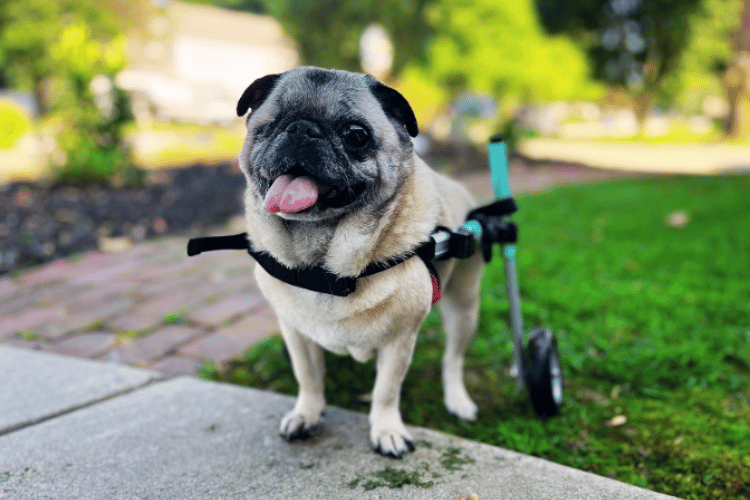
Understanding Mobility Issues in Dogs
Dogs can suffer from a range of conditions that affect their ability to walk, from degenerative diseases like degenerative myelopathy to acute injuries that result in paralysis or difficulty walking. For large dogs, conditions like hip dysplasia can severely limit their mobility, while smaller dogs might suffer from conditions that affect their back legs, such as luxating patellas.
The Role of Dog Wheelchairs in Pet Mobility
Dog wheelchairs, or pet wheelchairs, are designed to assist dogs who have lost the use of their legs. They come in various designs, including full support dog wheelchairs for pets needing assistance with all four legs, and rear wheelchairs that support just the back legs. These devices help to relieve stress on the dog's body and allow them to move around more freely.
Vets and Dog Wheelchairs: Professional Insights
Veterinarians often encounter pet owners seeking advice on how to best support their dog's mobility. In many cases, a dog wheelchair can be a recommended solution. Vets assess the dog's overall health, the progression of their condition, and their remaining strength to determine if a dog needs a wheelchair.
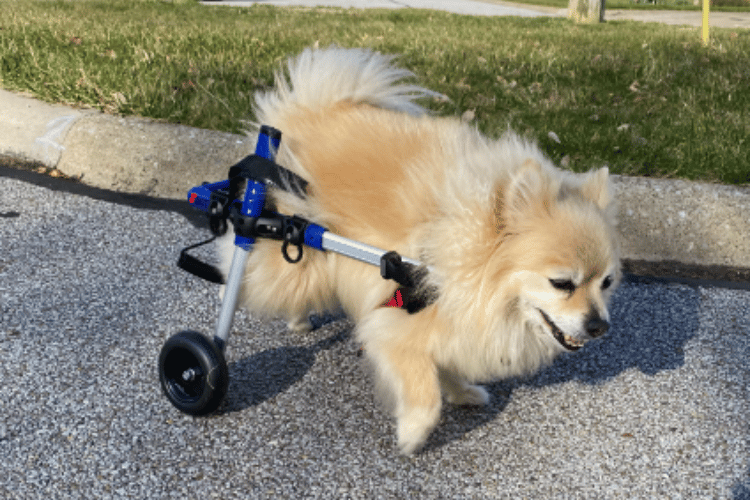
Key Wheelchair Features to Consider
When selecting a wheelchair for your dog, it's crucial to consider key wheelchair features that will ensure the right fit and support. The wheelchair should be fully adjustable to match the dog's size and weight, providing the necessary support without causing further injury. It should also be designed to allow your dog to maintain a standing position comfortably.
The Towel Test: Assessing Your Dog's Need for a Wheelchair
Before investing in a wheelchair, vets often recommend the towel test. This simple assessment involves using a towel to support the dog's rear legs while they walk. If the dog shows improvement in mobility with this extra support, a rear wheelchair might be the next step.
The Right Dog Wheelchair for Different Breeds
Different breeds have different needs when it comes to wheelchairs. For instance, German Shepherds might require more support due to their size and predisposition to conditions like degenerative myelopathy. On the other hand, a border collie might need a lighter, more agile wheelchair due to their active nature.
The Walkin' Wheels Wheelchair: A Popular Choice
The Walkin' Wheels wheelchair is a popular brand among pet owners and vets. It's known for being fully adjustable, which means it can fit most pets comfortably. The Walkin' Wheels dog wheelchair is designed to help dogs with rear limb weakness gain strength and enjoy daily walks again.
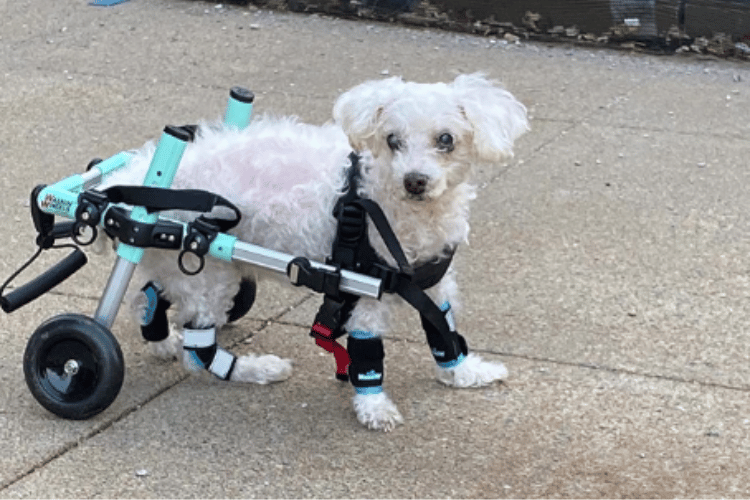
Introducing Your Dog to Their New Wheelchair
Introducing a dog to a new wheelchair requires patience and positive reinforcement. It's important to allow the dog to adjust gradually, starting with short sessions and increasing the duration as they become more comfortable.
Preventing Further Injury with the Right Wheelchair
A correctly sized and adjusted wheelchair can help prevent further injury by providing the right support without putting additional strain on the dog's body. It's essential to follow the manufacturer's guidelines and, if possible, consult with a vet to ensure the wheelchair is set up correctly.
The Impact of Wheelchairs on a Dog's Quality of Life
A dog's quality of life can significantly improve with the right mobility assistance. Wheelchairs allow dogs to engage with other dogs, explore their environment, and maintain a level of independence that might otherwise be lost.
Post Surgery Rehabilitation and Wheelchairs
For dogs recovering from surgery, a wheelchair can offer the extra support needed during the rehabilitation process. It allows them to stay mobile while healing, which can be crucial for a full recovery.
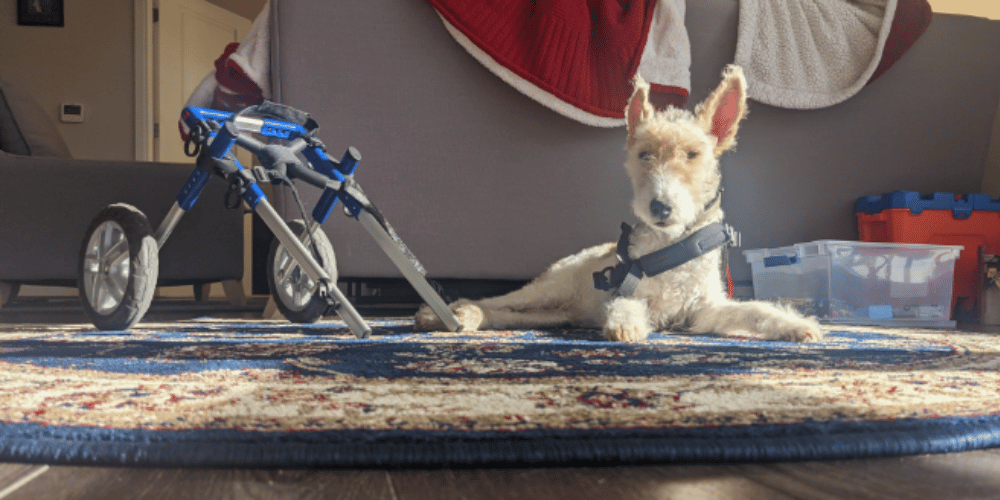
Types of Dog Wheelchairs: Finding the Best Fit
There are various types of dog wheelchairs available, each designed to cater to different needs. From full support wheelchairs for dogs with bad hips to rear wheelchairs for those with back legs issues, finding the best fit is key to providing the most benefit. Adapting Your Home for a Wheelchair-Bound Pet When your four-legged friend requires a full support dog wheelchair, it's essential to consider how your home environment can accommodate their new needs. For dogs whose rear legs have lost mobility, navigating the home can become a challenge. To support your pet's mobility, consider creating wide, clear paths free of obstacles that could hinder the dog's wheelchair. Ramps can be installed in place of stairs, and non-slip flooring can help prevent accidents, ensuring your dog's weight is safely supported as they move around.
Moreover, the placement of food and water bowls should be adjusted to the height of your dog's wheelchair, allowing them to eat and drink comfortably. For pets like German Shepherds, who are larger and may require a more robust full support wheelchair, reinforcing these areas to bear the dog's weight can prevent tipping or sliding. By making these home modifications, you're not only enhancing your dog's quality of life but also showing them that they're a valued member of the family, regardless of their mobility challenges.
Wheelchair Compatibility with Outdoor Activities A common concern for pet owners is whether a dog's wheelchair, like the Walkin' Wheels wheelchair, will limit their pet's ability to enjoy the outdoors. The best dog wheelchair designs take into account the need for outdoor activity, ensuring that your dog's body is supported while still allowing them the freedom to explore. Wheelchairs with durable, all-terrain wheels can handle various surfaces, from grassy parks to gravel paths, guiding your pet in the right direction towards a fulfilling and active lifestyle.
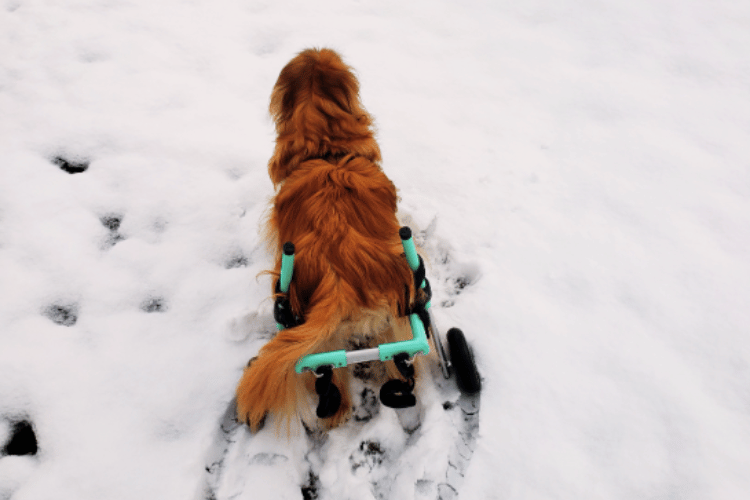
For dogs that have lost the use of their hind legs, a wheelchair that supports the dog's rear legs can open up a world of possibilities. Whether it's a leisurely walk in the neighborhood or a playful day at the beach, a well-designed pet's wheelchair can handle the demands of outdoor adventures. This means that your dog can continue to participate in family outings and maintain a sense of normalcy, which is crucial for their mental and emotional well-being.
Adjusting Home Environments for Wheelchair-Bound Dogs
When a four-legged friend requires a wheelchair, it's not just about the mobility aid itself; it's also about ensuring their environment supports their new needs. For dogs whose rear legs are supported by a wheelchair, navigating the home can present new challenges. Ramps may be necessary to avoid stairs, and furniture might need rearranging to create wider pathways. Slip-resistant flooring can help prevent accidents, especially for dogs that are still using their front legs to propel themselves. These adjustments help maintain your dog's quality of life and ensure they can move around safely and comfortably.
Moreover, outdoor spaces should also be considered for dogs using wheelchairs. Gardens and yards can be made more accessible by installing smooth pathways and removing obstacles that could hinder a dog's wheelchair. For breeds like the German Shepherd, which are typically very active, maintaining an environment where they can still explore and play is crucial for their mental and physical well-being. By thoughtfully adapting your home, you can greatly enhance your pet's mobility and spirits, allowing them to enjoy their daily activities with minimal restrictions.
Rehabilitation Techniques for Dogs with Wheelchairs
When a dog's rear legs begin to fail, it's not just about providing a wheelchair; it's about integrating rehabilitation techniques to enhance the pet's mobility. Physical therapy exercises tailored for dogs in wheelchairs can significantly improve their strength and coordination. For instance, hydrotherapy has been shown to be particularly beneficial for dogs with mobility issues, as the water's buoyancy reduces stress on the dog's body while allowing them to build muscle.

Moreover, targeted exercises designed to work with a dog's wheelchair can help redistribute the dog's weight more evenly, preventing overreliance on their front limbs. Simple activities like encouraging your four-legged friend to reach for treats while in their wheelchair can promote balance and core strength. Always consult with a veterinary physiotherapist to create a safe and effective rehabilitation plan for your pet.
Wheelchair Accessibility in Public Spaces for Dogs
When considering a wheelchair for your four-legged friend, it's important to think about the accessibility of public spaces they frequent. Many dog parks and public areas are becoming more inclusive, offering ramps and smooth pathways that accommodate wheelchairs. This inclusivity ensures that your dog's mobility isn't hindered by rough terrains or steps, allowing them to enjoy the outdoors just like any other dog. It's a heartwarming sight to see communities recognizing the needs of all pets, regardless of their physical capabilities.
Moreover, businesses are also taking note of the importance of accessibility for pets. Pet-friendly stores and cafes often provide ample space for maneuvering a dog's wheelchair, ensuring that your companion can accompany you on errands or social outings. This level of consideration goes a long way in maintaining your dog's quality of life, as it allows them to continue participating in daily activities and prevents them from feeling isolated due to mobility issues.
The Psychological Impact of Wheelchairs on Dogs
The introduction of a wheelchair can have a profound psychological impact on a dog. Initially, some dogs may feel hesitant or uncomfortable with the new apparatus. However, with patience and positive reinforcement, most dogs adapt quickly and their spirits lift as they regain independence. The ability to move freely and interact with their environment can lead to a noticeable improvement in a dog's demeanor, reducing signs of depression or anxiety that may have been present due to their immobility.

Furthermore, the social benefits for a dog using a wheelchair are significant. Dogs are inherently social creatures, and the use of a wheelchair allows them to engage with other dogs and humans more effectively. This interaction is crucial for their mental health and overall well-being. Observing a dog's wheelchair transform from a foreign object to a trusted tool that enables play, exploration, and companionship is a testament to their resilience and adaptability.
Innovations in Dog Wheelchair Design
The evolution of dog wheelchairs work towards enhancing a dog's quality of life by incorporating cutting-edge materials and design. Innovations in the field are making wheelchairs lighter, more durable, and better suited to a dog's body. For example, the Walkin' Wheels wheelchair is known for its adjustability, allowing for a perfect fit regardless of a dog's size or condition. This ensures that the pet's mobility is supported without causing additional strain or discomfort.
Furthermore, advancements in 3D printing technology are paving the way for custom pet wheelchairs that can be tailored to the unique contours of a dog's body. These custom solutions offer a level of comfort and mobility that off-the-shelf models may not provide. As we continue to see progress in this area, the potential for improved daily living for our walkin pets is immense, promising a future where every dog can enjoy their walks, regardless of their physical limitations.
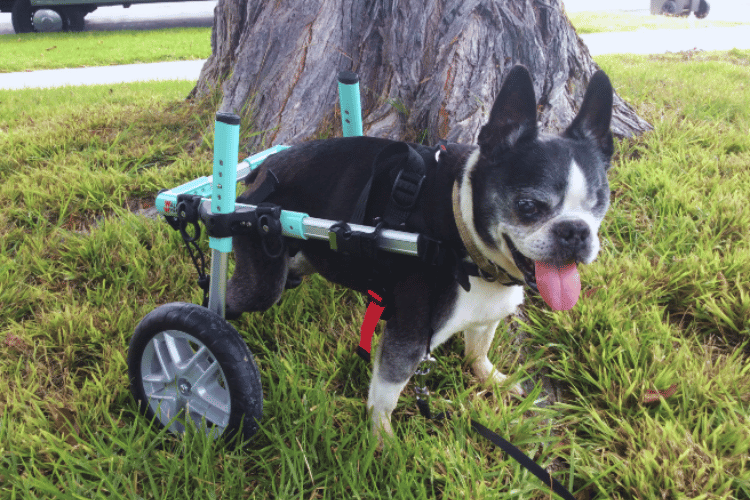
Wheelchair Compatibility with Other Pets
Introducing a pet's wheelchair into a household with multiple animals requires careful consideration to ensure harmony among your furry companions. Dogs are social creatures, and their interactions with other pets can influence their emotional state and overall well-being. When a dog's mobility is compromised, and they begin using a Walkin' Wheels wheelchair, for instance, it's important to monitor how their four-legged housemates react. Some pets may be curious or even wary of the new device, so it's essential to supervise initial interactions and encourage positive associations with treats and praise.
Additionally, it's beneficial to consider the dynamics of play and interaction. A dog's wheelchair should not impede their ability to socialize and engage with other pets. Ensuring that the wheelchair is the correct size and properly supports the dog's weight and body can prevent it from becoming a source of discomfort or frustration during playtime. With the right introduction and ongoing support, pets can adapt to their companion's new circumstances, allowing for continued socialization and play, which are vital components of a pet's quality of life.
The Emotional Benefits for Pets and Owners
The use of a wheelchair can have emotional benefits for both the pet and the owner. Seeing their best friends regain a sense of normalcy and joy in their daily activities can be incredibly rewarding for pet owners.
Choosing the Correct Size Wheelchair
Selecting the correct size wheelchair is crucial. A wheelchair that's too large or too small can cause discomfort and may not provide the necessary support. It's important to measure your dog accurately and consult sizing charts or a professional before making a purchase.

Wheelchair Training: Helping Your Dog Adjust
Training your dog to use a wheelchair involves encouragement and consistency. Starting with basic movements and gradually increasing the complexity of tasks can help your dog adjust to their new form of mobility.
The Long-Term Benefits of Dog Wheelchairs
Over time, the use of a wheelchair can help dogs gain strength in their remaining limbs, maintain muscle tone, and prevent atrophy. This can lead to a more active and fulfilling life for pets with mobility issues.
When Is the Right Time for a Wheelchair?
Determining the right time to introduce a wheelchair depends on the individual dog's condition and needs. Vets can provide guidance based on the progression of the dog's mobility issues and overall health.
The Cost of Dog Wheelchairs: Investment in Your Pet's Health
While dog wheelchairs can be an investment, many pet owners find that the benefits to their dog's health and happiness are well worth the cost. There are options available for different budgets, and some organizations offer assistance or donations for those in need.
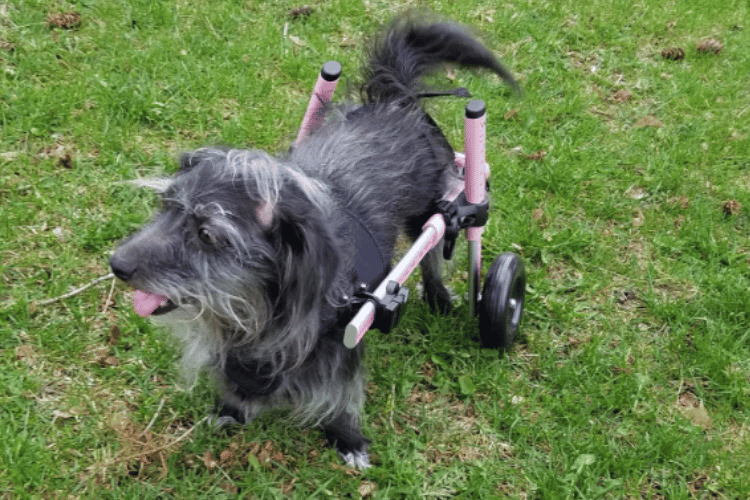
Custom Wheelchairs: Tailored Mobility Solutions
For dogs with unique needs or body shapes, custom wheelchairs can be the answer. These are made to fit the exact specifications of the dog, ensuring the best possible support and comfort.
The Role of Exercise and Physical Therapy
In addition to using a wheelchair, exercise and physical therapy can play a significant role in a dog's mobility. These activities can help improve strength and flexibility, complementing the support provided by the wheelchair.
Success Stories: Dogs Thriving with Wheelchairs
There are countless success stories of dogs who have thrived after being fitted with a wheelchair. From paralyzed pets who can now enjoy walks to those with rear limb weakness who can play again, these stories serve as powerful testimonials to the effectiveness of dog wheelchairs.
The Future of Dog Mobility Assistance
Advancements in technology and design continue to improve the options available for dog mobility assistance. The future looks bright for pets with mobility issues, with more innovative solutions on the horizon.
How to Care for Your Dog's Wheelchair
Proper care and maintenance of your dog's wheelchair are essential for its longevity and performance. Regular cleaning and inspection for wear and tear can help ensure that the wheelchair remains a reliable support for your pet.
The Community of Wheelchair-Assisted Pets
A supportive community exists for owners of wheelchair-assisted pets. Online forums, social media groups, and local meetups can provide valuable advice, support, and camaraderie for those navigating their pet's mobility journey.

Summary
Veterinarians often recommend dog wheelchairs for pets with mobility issues to enhance their quality of life. These devices come in various types, including full support and rear wheelchairs, and are designed to accommodate dogs of all sizes, from small dogs to large breeds like German Shepherds.
The right dog wheelchair can offer significant benefits, such as preventing further injury, improving a dog's quality of life, and aiding in post-surgery rehabilitation. When choosing a wheelchair, it's important to consider the dog's weight, specific mobility needs, and the key features that will provide the best support. With proper introduction and training, most pets can adjust to their new wheelchair and regain a sense of independence and joy in their daily activities.
FAQ Section
Q: How do I know if my dog needs a wheelchair? A: If your dog has difficulty walking, shows signs of rear limb weakness, or is recovering from surgery, a wheelchair might be beneficial. Vets often recommend performing the towel test to assess your dog's need for mobility assistance.
Q: Can all dogs use wheelchairs? A: Most dogs with mobility issues can use a wheelchair, but it's important to choose the right type and size for your particular dog. Consult with your vet to determine if a wheelchair is suitable for your pet's condition.
Q: How long does it take for a dog to adjust to a wheelchair? A: The adjustment period varies for each dog. Some may take to it quickly, while others need gradual introduction and positive reinforcement. Consistent training and patience are key to helping your dog adapt to their new wheelchair.
Thank you for visiting LegitLists we hope this helps you make a legitimate choice!






